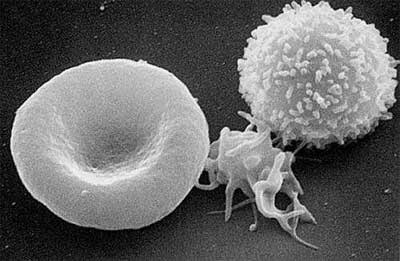- Home
- Editorial
- News
- Practice Guidelines
- Anesthesiology Guidelines
- Cancer Guidelines
- Cardiac Sciences Guidelines
- Critical Care Guidelines
- Dentistry Guidelines
- Dermatology Guidelines
- Diabetes and Endo Guidelines
- Diagnostics Guidelines
- ENT Guidelines
- Featured Practice Guidelines
- Gastroenterology Guidelines
- Geriatrics Guidelines
- Medicine Guidelines
- Nephrology Guidelines
- Neurosciences Guidelines
- Obs and Gynae Guidelines
- Ophthalmology Guidelines
- Orthopaedics Guidelines
- Paediatrics Guidelines
- Psychiatry Guidelines
- Pulmonology Guidelines
- Radiology Guidelines
- Surgery Guidelines
- Urology Guidelines
Broadly adopted transfusion practice may not benefit patients without traumatic injury: JAMA

A study from investigators at Massachusetts General Hospital (MGH) finds that a blood transfusion practice previously studied only in patients with severe traumatic injuries has been widely adopted within the hospital for surgical patients without traumatic injuries. Not only has this practice not been shown to benefit non-trauma patients, the MGH study suggests that it may be harmful to some, an observation that indicates the need for more research.
"The strategy of giving patients requiring massive transfusion greater amounts of fresh frozen plasma, relative to the amount of red blood cells, has spilled over from trauma patients into unstudied patient populations," says Daniel Dante Yeh, MD, of the Division of Trauma, Emergency Surgery and Critical Care in the MGH Department of Surgery, who led the study published in JAMA Surgery. "This may have important consequences, since our results suggest that certain populations may be harmed by this practice."
Massive blood transfusions—defined as transfusing at least 10 units of red blood cells within 24 hours are given to patients experiencing severe blood loss, often in response to traumatic injuries but also in the context of procedures like cardiovascular surgery or liver transplantation and even in some non-surgical patients. Massive transfusion can include adjustments of the ratios of components including fresh frozen plasma (FFP), platelets and red blood cells (RBC) with the goal of improving outcomes.
The strategy of giving a higher proportion of plasma is based on the belief that maintaining the balance of coagulation factors carried in plasma would reduce the overall amount of bleeding, requiring lower amounts of red blood cells and improving survival. While not new, the concept has gained interest in recent years following reports from military surgeons that administering a higher ratio of FFP to RBCs may have improved the survival of soldiers with serious injuries. Similar reports from civilian trauma centers have led to broad adoption of what is called ratio-based resuscitation for trauma patients requiring massive transfusion.
The MGH research team including physicians from both the trauma service and the transfusion service embarked on the current study in response to the observation that high-ratio transfusion was increasingly being used in massive transfusions given to non-trauma patients, a practice not previously studied in this population. To determine how common that had become and to test the hypothesis that higher ratios of FFP to RBCs were associated with improved survival of non-trauma patients, the investigators analyzed data covering all massive transfusions administered at the MGH from 2009 to 2012.
Of the 865 massive transfusions administered during the four-year period, 767 were given to non-trauma patients most often to control bleeding during non-emergency surgery. Overall, the ratios of FFP to RBCs given to patients who did or did not survive were almost identical. Dividing patients into three groups those receiving high, medium and low FFP to RBC ratio transfusions revealed no difference in 30-day mortality between groups, including for trauma patients. However, among general surgery and medical service patients those receiving high-ratio transfusions had a higher mortality rate than those receiving low-ratio transfusions, while the opposite was found among vascular surgery patients.
"Finding evidence of increased mortality in some patients was surprising because that is directly contradictory to what is expected and intended," says Yeh. "Avoiding unnecessary FFP transfusion is important because there have been reports that associated the use of excess FFP with worse outcomes among patients that required less-than-massive transfusions."
An assistant professor of Surgery at Harvard Medical School, Yeh adds, "Because our study is retrospective, it can only point to the need for further research. Ratio-based transfusion has been studied in trauma patients, most recently in a landmark, multicenter randomized study called the PROPRR trial. Similar studies now need to be performed in non-trauma patients before the approach can be accepted as standard practice here at MGH and elsewhere."

Disclaimer: This site is primarily intended for healthcare professionals. Any content/information on this website does not replace the advice of medical and/or health professionals and should not be construed as medical/diagnostic advice/endorsement or prescription. Use of this site is subject to our terms of use, privacy policy, advertisement policy. © 2020 Minerva Medical Treatment Pvt Ltd